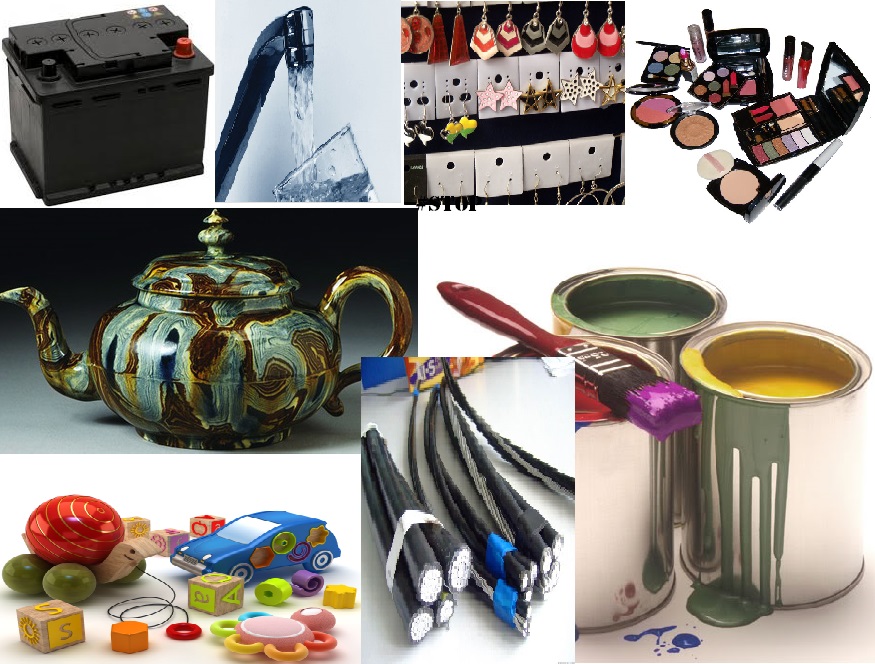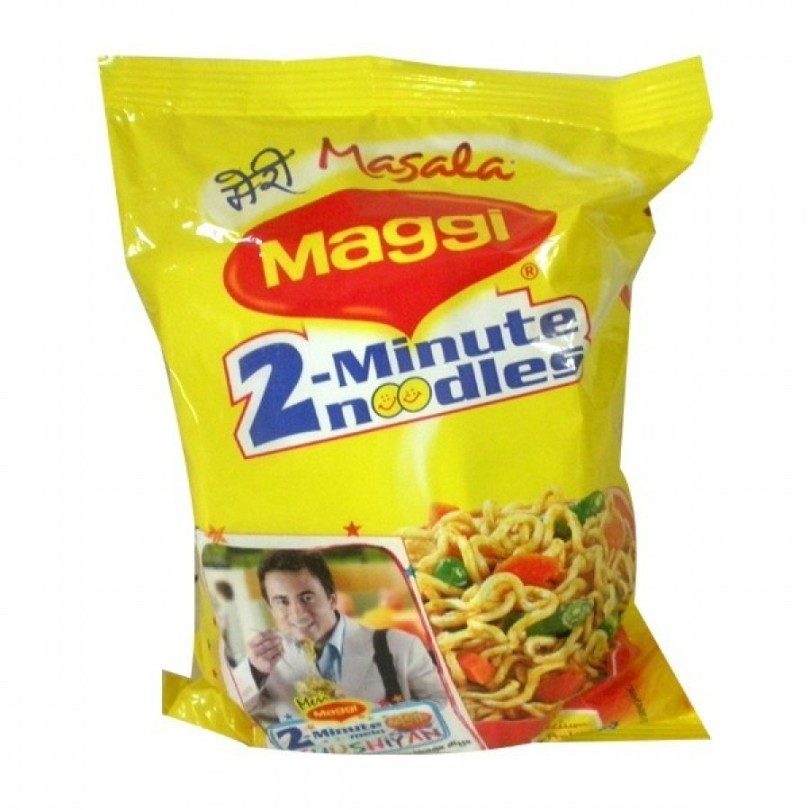Be part of the Big Impact: Stop Lead Poisoning
Colourless, odourless and poisonous lead, invisible to the naked eye but is present in the soil, water, air and products of daily use. In countries like The US, FDI takes stringent measures to ensure that lead compound in consumer goods are within the permissible limit; mandatory labour rules and regulations assure the safety of Lead workers. In India various organizations successfully highlighted the hazards of lead in petrol and lead in paint, and they were successful in implementing certain restrictions on the usage of lead. Now Lead is not used in petrol anymore, and lead in paint has to be within permissible limits. There is a long way to go, much more have to be done to reduce or restrict the use of lead in India.
In the last two years, Consumers India conducted a series of research with students, researchers and doctors, accumulating a wealth of information clearly indicating towards the presence of a hazardous level of Lead in India. As a result of consistent effort, letters, based on the studies and discussion, have been sent to Prime Minister, Health Minister, Cabinet Secretary and others in Government of India. This issue has also been flagged before National Human Rights Commission.
According to WHO, 13 out to the 20 most polluted cities in the world are in India, and Delhi tops the chart with six times the level of airborne particulate matter than are considered safe. WHO prepared the report based on the presence of harmful gases in the air such as nitrogen dioxide, carbon monoxide and sulphur dioxide. There are some other pollutants in our surrounding which need to be reduced or if possible removed from the environment. One such pollutant is Lead, described as ‘hazardous’ and ‘poisonous’ worldwide, and found in dangerous level in the atmosphere as well as inside the human body. All lead found in products are lead compounds which oxidize and mixes with water, soil, air and human blood and bone.
Inorganic Lead compounds used for the industrial or domestic purpose, mostly in the oxidized state, leaches into the soil, water and air resulting in many health hazards leading to even death. According to studies Lead (PB2) is mistaken for Calcium (Ca2) and gets into the bones.
Lead has been used since time immemorial and was considered healthy for use. But scientific studies and clinical reports prove that lead at any level is harmful for human consumption. However because of many useful properties like water resistance and enhancing the colour, lead is used in many domestic and industrial products like the lead sheet, cosmetics, PVC pipes, glaze and ceramic paintings, trinkets and paints.
How to detect lead?
The presence of lead can only be proved by tests at Lead testing labs.
How to participate in the campaign?
All the Data and pictures collected can be tweeted with #StopLeadPoisoning to create the big impact
- You can take the image of activities around your places like battery recycling or industrial activities which are taking place in areas banned for such activities.
- If you find lead mentioned in the labeling, then send the pictures.
- If you think someone, especially worker and kids have symptoms of lead poisoning, take picture and report.
- If there are products with lead compounds at home, you can click the image.
- You can also test the soil with Handheld X-ray fluorescence XRF analyzer
- No level of lead is good for human health, but in many countries blood lead level below 10 is considered safe and above 40 is hazardous.
Products that cause Lead poisoning
Paints
Lead is used in paints for speedy drying, durability and resistance to moisture that causes corrosion. Since lead is a leading cause of health hazard, many countries have the regulation prohibiting the use of lead in paints. Alternative water-based paints are available. Although there are restrictions on the usage of lead in paint in India, Lead is added to some paints intended for household use. According to as survey by Toxic Link, it was the small and medium companies that covered 36%of the market which had a discrepancy in their claim about lead in paints. They find some technological difficulty in shifting to lead-free paints. Only lab tests can prove the presence of lead in paint. Lead added paints may be used in the homes. And sometimes playground equipment may contain high lever of lead, making the places hazardous for the kids.
Lead Sheets
Lead sheet is used for the construction of industry for roofing, flashing and cladding. And also used as shielding in the x-ray and nuclear industries. Lead in its solid metallic state (Lead sheet) would not normally present a hazard. However, Lead is a toxic metal and may present a hazard when melted from Lead dust and lead fumes. Oxidation of the surface of the Lead will occur forming a surface layer of Lead compounds.
Lead in water
Lead may be found in some metal water taps, interior water pipes, or pipes connecting a house to the main water pipe in the street. Lead found in tap water usually comes from the corrosion of older fixtures or from the solder that connects pipes. When water sits in leaded pipes for several hours, lead can leach into the water supply
PVC Pipes
As per various surveys and investigations conducted by organisations such as the ‘Quality Council of India,’ the presence of ‘lead in water’ has alarmed people and agencies across the country. Thirty-three percent of over 370 samples of water from the top 26 cities of India tested positive for the harmful content of lead. Out of these, 31% of samples failed to adhere to the World Health Organization (WHO) standards for a lead content of less than 10 ppb (parts per billion), while 2% of the samples failed to meet even the lenient Indian norms of 50 ppb.
Car and Inverter Batteries
Lead poisoning occurs in many areas because of individuals recycling car batteries melted slag without appropriate controls and without having any understanding of the toxicity of lead. According to a report, there are 110 Lead acid battery recycling units at Prem Nagar, near Mandoli, in Delhi which….. recover lead, releasing fumes and ash contaminating the air and soil. Dr Naresh Gupta and Dr Amit Agrawal, of Maulana Azad Medical College, say that blood test on some workers in Delhi found that their blood lead is more that <40μg per dL, i.e., above the permissible limit. In another incident in Delhi 5-year-old girl, whose father is a battery factory worker, died of lead poisoning after suffering from kidney failure.
In humid conditions, car batteries need to be replaced every 2 or 3 years. Batteries are safe, but caution applies when touching damaged cells and when handling lead acid systems that have access to lead and sulfuric acid.
Ceramics Glaze
Lead may be present in the glazes or decorations covering the surface of some traditional pottery. If the pottery is not manufactured correctly, this lead can leach into food and drink that is prepared, stored, or served in the dishes.
It is not uncommon for ceramic items used for cooking or simply for decoration to contain lead. In fact, lead has been used in the glazing process for ceramic dishes, bowls, pitchers, plates and other utensils for centuries. Typically, after being fired in a kiln, a piece of ceramic will appear smooth and shiny due to the lead in the glaze.
However, to ensure that the items are safe for use, it is necessary to heat the ceramic to very high temperatures for a long enough period. If this step is not done correctly, the ceramic could contain levels of lead that pose a threat to human health.
Trinkets
Children use jewelry like bracelets, pendants, rings, etc. To attract kids, jewelry paint bright colours using organo-metallic compounds that are loosely bound to the surface and can peel out quickly. Children have a tendency to chew or swallow the jewellery which can sometimes be lethal.
Cosmetics
- Kohl, Kahal, Al-Kahal, or Surma: According to FDI, samples often tested contain significant amounts of lead. Lead sometimes accounts for more than half the weight of a sample of kKohl usually in the form of lead sulfide.
- Lipstick: What many don’t know is that lipsticks may contain lead, the notorious metal that can cause learning, language and behavioral problems. Not all lipsticks contain lead, but some studies in recent years show that the metal is more prevalent than previously thought. In 2007, the Campaign for Safe Cosmetics conducted a study — “A Poison Kiss” — that detected lead in 61% of the 33 lipsticks tested, with levels ranging from 0.03 ppm to 0.65 ppm. No lipstick lists lead as an ingredient. The amounts are small, but the presence of lead in lipstick, which is ingested and absorbed through the skin, raises concerns about the safety of a cosmetic product that is wildly popular among women. According to FDI “Lipstick, as a product intended for topical use with limited absorption is ingested only in tiny quantities. We do not consider the lead levels we found in the Lipsticks to be a safety concern.” Cost doesn’t seem to be a factor; a cheap or expensive lipstick isn’t the determinant of how much lead is present.
- Progressive Hair Dyes: Lead acetate is used as a color additive in “progressive” hair dye products. These products are applied to achieve a gradual coloring effect.To ensure the safe use of these products, it is important that consumers follow these directions carefully.Users can determine if lead acetate is used in a particular hair dye product by reviewing the product ingredient declaration appearing on the label of the cosmetic package.
Toys
Lead may be found in paint on toys. It may also be used in plastic toys to stabilize molecules from heat.
Plastic
Lead softens the plastic. The use of lead is plastic is still prevalent.
Contributors to the Campaign
The inputs from the following discussion and studies were mentioned in the letters sent to Honorable Prime Minister and other higher Authorities. Important inputs were also provided by various other experts. The contributors are as follows:
- A group of students, led by Sushant Thakran, pursuing BBS from Shaheed Sukhdev College of Business Studies (University of Delhi) has prepared a study report titled ‘Lead & Occupational Hazards’ during Winter 2014-15 Batch of Internship with Consumers India.
- Inputs from the study ‘Lead Poisoning and Women’ by the group led by Subuhi Karim (MA Eco-Jamia Millia Islamia).
- Expert inputs received from Dr Naresh Gupta, Director-Professor, Maulana Azad Medical College & Associated Hospitals.
- Dr Roopa Vajpeyi, Academic & Consumer Activist was the mentor of the student groups.
- Dr Naresh Gupta, Dr Roopa Vajpeyi and Ms Anita Gupta, Academic Head for Science, Mount Carmel School, who were panelists in our programme‘Is Lead Poisoning Killing You Slowly?’
[plain]Full text of the LETTER TO THE PRIME MINISTER, as also some highlights of the study ‘Lead & Occupational Hazards’ are given below.
December 27, 2015
Dear Mr Prime Minister,
I would like to share with you some of our concerns regarding Lead Poisoning emanating from the studies titled ‘Lead & Occupational Hazards’ and ‘Lead Poisoning and Women’ carried out by groups of students led by Sushant Thakran (BBS-3rd yr, Shaheed Sukhdev College of Business Studies, DU) and Subuhi Karim (MA Eco-Jamia Millia Islamia) respectively during internship with Consumers India as also expert inputs received from Dr Naresh Gupta, Director-Professor, Maulana Azad Medical College & Associated Hospitals, Dr Roopa Vajpeyi, Academic & Consumer Activist and Ms Anita Gupta, Academic Head for Science, Mount Carmel School, who were panelists in our programme ‘Is Lead Poisoning Killing You Slowly?’ Held on October 28, 2015, at India Habitat Centre.
- Lead is a chemical element in the carbon group which is used extensively in paints, toys, cable sheathing, lead sheets, PVC Pipes, ammunitions, car and inverter batteries, ceramics glaze, cosmetics, etc. Ayurvedic and herbal medicines may also contain high levels of lead.
- WHO has identified lead as one of the chemicals of major public health concern. As per their estimates, 15-18 million children in developing countries are suffering from permanent brain damage due to lead poisoning.
- The tests carried out by the Centre for Science on popular paints in India found that 72 % of the samples had much higher levels of lead than the voluntary limit specified by the Bureau of Indian Standards.
- All the samples of artificial jewellery tested by Toxics Link were found to contain very high levels of lead, which when ingested, could lead to lead poisoning.
- 33% of over 370 samples of water from the top 26 cities of India tested positive for the harmful content of lead. (QCI).
- Exposure to lead causes anaemia, hypertension, kidney diseases and impaired fertility. Children and pregnant women are particularly susceptible to lead poisoning. The foetus of a pregnant woman is gravely affected by lead exposure since lead can pass through the placenta directly to the baby.
- Lead paint is the major source of lead exposure for children. Children’s digestive system absorbs up to 50% of the lead they ingest. Studies have shown as much as a 5.8 decline in IQ (on a scale where 100 is average) for every 10 micrograms increase of lead in blood levels.
- As lead paint deteriorates, it peels. A single chip of paint of the size of a thumbnail contains 1 gram of lead, and a few such chips can raise the intake of lead to 1,000 times the acceptable limit. Children with a history of pica (compulsive cravings to eat non-food items like dirt, paint chips or clay) are at risk of lead poisoning.
- Cosmetics like lipstick, Kajal and sindoor are major sources of lead poisoning in women. The average quantity of lipstick ingested by a woman in her lifetime is 2 kgs, and it is also linked to infertility and miscarriage.
- A survey of workers carried out by our interns for their study revealed that most of the painters don’t even know that there is the lead in paint which is hazardous to health. The battery recyclers, however, generally know that their field of work is associated with lead. But they cannot imagine switching jobs as they have to feed their family!
- A survey of consumers revealed that 70% of them had no awareness of the lead content they are exposed to in day-to-day life.
- Though Bureau of Indian Standards (BIS) had revised its household and decorative paint standards to 90 ppm in 2013, it is rarely followed by industry.
We suggest that following steps be taken by the Government to tackle this menace effectively:
- It is necessary to establish a national mandatory regulatory framework to control the manufacture, import, export, sale, and use of lead paints, toys, cosmetics, Ayurvedic and herbal medicines and other products causing lead poisoning.
- Awareness regarding lead poisoning should be spread amongst consumers.
- Prenatal check up of pregnant women should include the blood test for lead.
- There is also need to review the existing limits for Lead in prevailing standards. Many countries worldwide are reducing the permissible limits. For example, Canada has a limit of 10 ppm for Lead in products applied to the skin.
We appeal to you to kindly take adequate measures to safeguard the health and well-being of our consumers from the hazards of lead poisoning.
With regards,
Yours truly,
Dr Jayashree Gupta
President, Consumers India[/plain]






32 comments